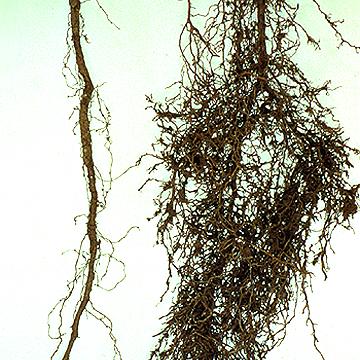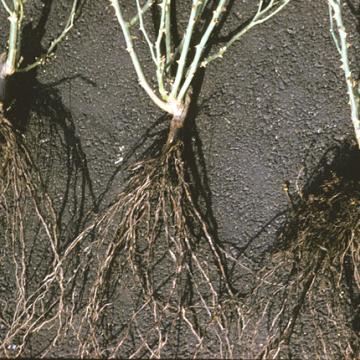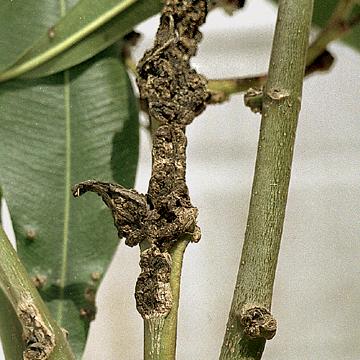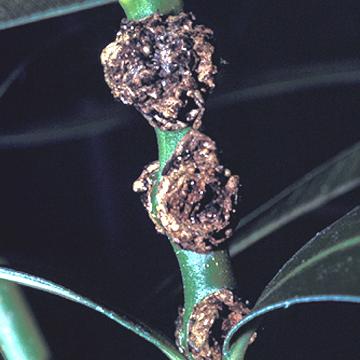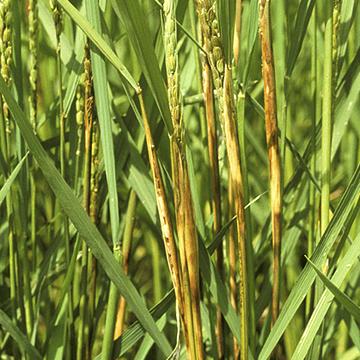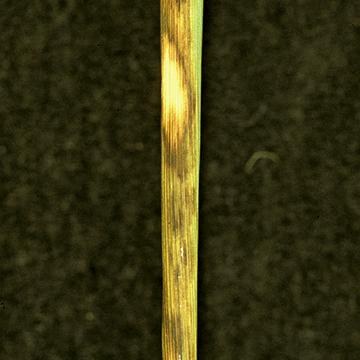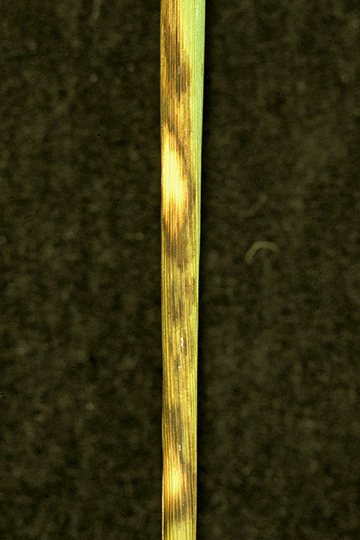DISEASE: Hairy root
HOST: Rose
Hairy root symptoms of many fibrous roots (right). Noninfected root (left).
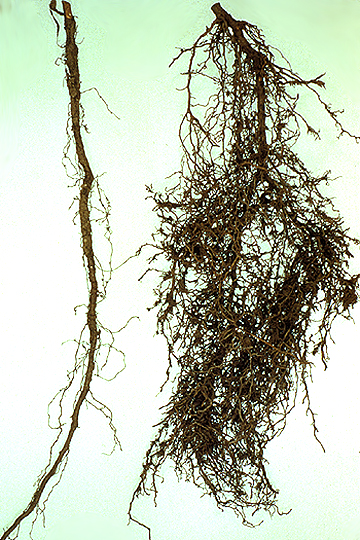
Hairy root | Rose
DISEASE: Hairy root
HOST: Rose (Rosa sp.)
PATHOGEN: Agrobacterium rhizogenes
SOURCE: R. Raabe
DISEASE: Hairy root
HOST: Apple
Crown gall (left) and hairy root (right) caused by Agrobacterium tumefaciens and A. rhizogenes, respectively.

Hairy root | Apple
DISEASE: Hairy root
HOST: Apple (Malus domestica)
PATHOGEN: Agrobacterium rhizogenes
PATHOGEN SYNONYM: Rhizobium sp.
SOURCE: APS
DISEASE: Hairy root
HOST: Rose
Crown gall (left) and hairy root (right) caused by Agrobacterium tumefaciens and A. rhizogenes, respectively. Healthy root (center).
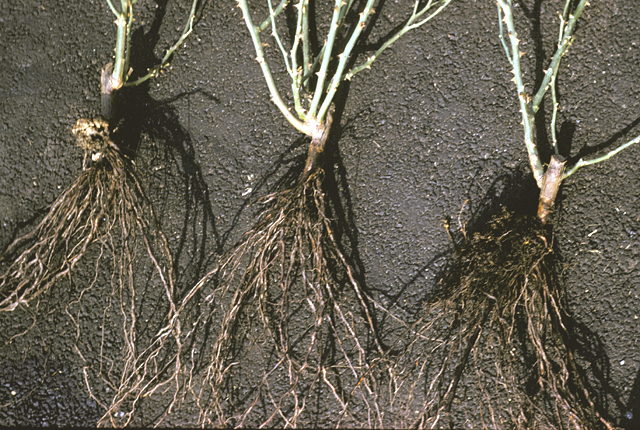
Hairy root | Rose
DISEASE: Hairy root
HOST: Rose (Rosa sp.)
PATHOGEN: Agrobacterium rhizogenes
PATHOGEN SYNONYM: Rhizobium sp.
SOURCE: M. Schroth
DISEASE: Oleander knot
HOST: Oleander
Oleander with small knots/galls on leaf and stems.
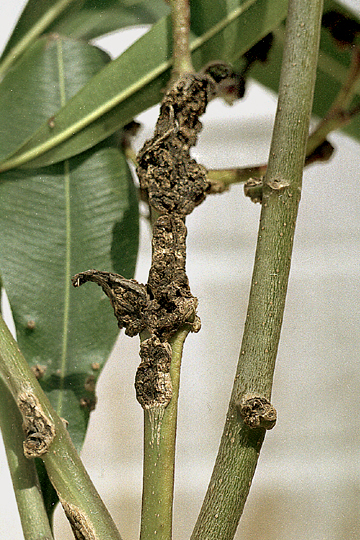
Oleander knot | Oleander
DISEASE: Oleander knot
HOST: Oleander (Nerium oleander)
PATHOGEN: Pseudomonas savastanoi pv. nerii
SOURCE: W. Sinclair
DISEASE: Oleander knot
HOST: Oleander
Young stem with knots/galls.
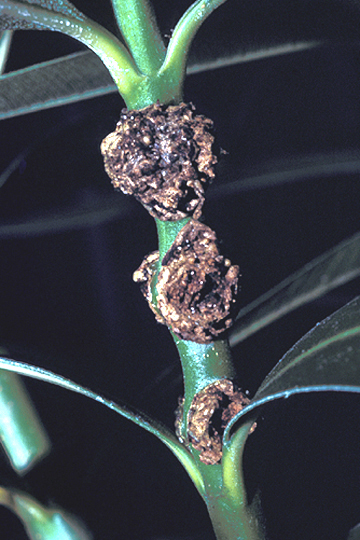
Oleander knot | Oleander
DISEASE: Oleander knot
HOST: Oleander (Nerium oleander)
PATHOGEN: Pseudomonas savastanoi pv. nerii
SOURCE: R. Raabe
DISEASE: Oleander knot
HOST: Oleander
Leaf with early stage of knot/gall formation.
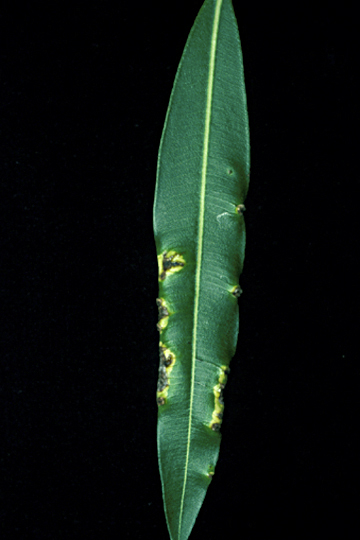
Oleander knot | Oleander
DISEASE: Oleander knot
HOST: Oleander (Nerium oleander)
PATHOGEN: Pseudomonas savastanoi pv. nerii
SOURCE: R. Raabe
DISEASE: Oleander knot
HOST: Oleander
Infected flowers with small knots/galls and necroses.
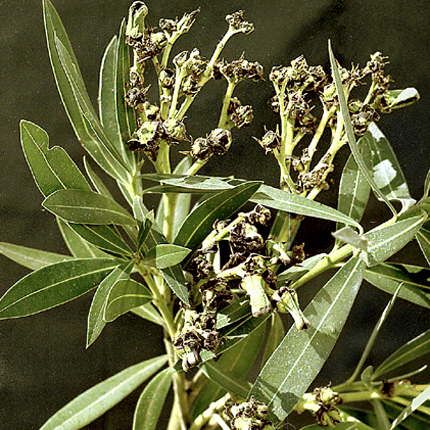
Oleander knot | Oleander
DISEASE: Oleander knot
HOST: Oleander (Nerium oleander)
PATHOGEN: Pseudomonas savastanoi pv. nerii
SOURCE: W. Sinclair
DISEASE: Sheath brown rot
HOST: Rice
Disease symptoms typically occur on flag leaf sheaths from booting to heading stage and also on panicles. Water-soaked lesions on glumes turn light brown.
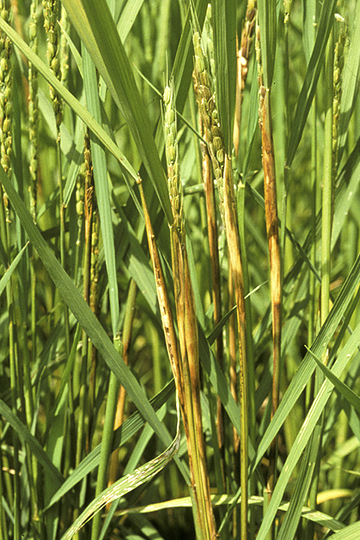
Sheath brown rot | Rice
DISEASE: Sheath brown rot
HOST: Rice (Oryza sativa)
PATHOGEN: Burkholderia fuscovaginae
PATHOGEN SYNONYM: Pseudomonas fuscovaginae
SOURCE: K. Miyajima, M. Goto


